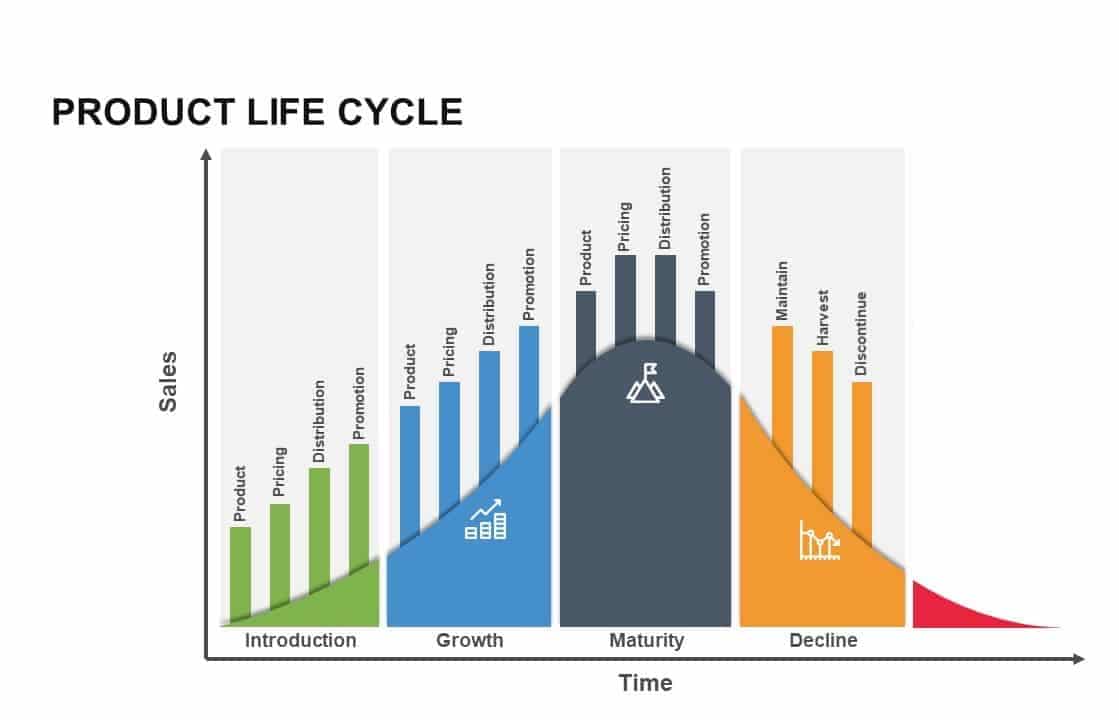What is Product Life Cycle Theory

Every aspect of the world revolves around a cyclic process known as the life cycle. A life cycle is generally a blend of various stages that takes a product from its maturity or introduction to its final stage, which is withdrawal or demise. A life cycle follows a pattern form of growth to maturity and from existence to decline. You might have heard of the various life cycle, including the business life cycle, consumer life cycle, employee’s life cycle. Now its time to acknowledge about products, how from being unbeknownst to a market leader and to eventual demise, how a product goes through its lifetime.
Daily you buy several products, as just like you are in a consumer life cycle, these products have a life cycle. As the older or long-established product goes out of demand and gets less popular while in contrast, a new product with stylish and modern looks gains immense response from the consumer soon after they are launched.

Watch the Product Life Cycle, but most important, watch market life cycle. Philip Kotler
Whether you are looking at grandparents’ old radio or just buying a new smartphone, you are experiencing different phases of a product life cycle. When a product gets introduced in a market, it’s often unbeknownst to the consumers. But soon after promotions and marketing, the demand hikes up. It has a lifespan that carriers it from being a market leader to being retired from circulation in the market. This cycle happens continually with every product. Understanding the business life cycle will be crucial for the business to make the investment, marketing-related decisions. When a product is a new business should invest heavily in the sales and marketing plan to ensure the business continues to grow.
Let’s discuss what’s product life cycle is? And how analyzing it could help the companies?
What is the Product Life Cycle?
A product life cycle is a pattern or the chain a product follows or goes through since it is introduced into the market until it declines and is removed from the market. Not every product gets knocked out from the market; some continue to rise and have a prolonged maturity. Some products continue to grow, whereas another phase out from the market due to several factors such as immense competition, saturation. Decreased demand, dropping sales, less profit margin. A product life cycle constitutesof five stages: development, introduction to growth, maturity, and decline. The changes are associated with changing market situations, which impacts marketing strategies and marketing mix.
Stages of Product Life Cycle
Every product goes through all these five phases of a product life cycle. But time spent at each stage differs from product to product. From some products, life-cycle is calculated in months, whereas for others, it can be measured in decades or centuries.
- Development: it’s the initial phase of a product life cycle. Its often referred to as the valley of death. As because the expense is high, the risk associated it at the peak with no corresponding revenue. Since the risk is high, funding is limited. Often in this stage, funding is done by an entrepreneur’s own personal resources.
- Introduction: It’s the second phase of a product life cycle. In this stage, the product is introduced to the market. It’s the most expensive phase of the business, as it’s associated with several other processes like research and development, consumer testing, marketing, etc.

- Growth: In this stage, product sales are high, and consumers are increasingly buying them. The product has limited competition, so prices are high. Competitors are aware of the product and its market share. The product needs to be improvised periodically to be sustained in the market.
- Maturity: At this stage sales are low, competition is high, so the product needs to be enhanced in order to maintain market share. The aim of the manufacturer is to maintain the market share. They wisely need to undertake any marketing activity. Decline: At this stage, the product starts to shrink, sales are low, and is known as decline stage. The consumer behavior changes and demand for the product are less. Competition tends to increase, and the product loses more and more market share.
Most marketers think there's a concept called product life cycle. Once you realize the world is organized by the jobs that need to be done, you understand that product life cycles don't exist. Clayton M Christensen
Extending Product Life Cycle
How to create a product can be, but eventually, it turns out of trend and demand. For some products, the life cycle span can be calculated in months, whereas for some products, it’s calculated in years or decades. Several marketing techniques can be practiced to extend the growth and maturity of the product life cycle. And even delay the decline phase.
Here are some of the extension Strategies:
- Updating: Enhancing product quality, features, and relaunching the product will surely stimulate the customer back to your product.

- Advertising: Opting newer ways of advertisement can surely attract more consumers. As it’s the time of social media. Posting Instagram Ads can target a larger audience. If you want to make your marketing campaign interactive and engaging then tryout these amazing Marketing Plan Templates.
- Price Reduction: Reducing the price, then that of the competitors, can be a stimulating factor.
- Exploring New Market: Never settle in the same geographic area for long. Try to grasp a newer market for your product. If you struggling to gain a new customer. Then check out our blog on How to Build Customer.
Importance of Product Life Cycle
Product Life Cycle reflects the aging process of a product. It’s similar to human life. From its birth(development), it goes to several phases until its discontinued from the market.
- Using PLC theory, an entrepreneur can predict the downfall or decline of the product. And can plan strategies about product modification, pricing strategies, quality changes, and so on.
- It’s a crucial planning tool as it provides necessary data to sales and marketing teams.
- Development of New Product: As if there is no scope for modification or customization of an existing product. Using the PLC data, you can develop a new product which the consumer desire for.
- Competitive Advantage: Besides running your own product life cycle, a marketing professional can also run the product life cycle of competitors too. As it gives an insight into the preparations, competitors might be doing to sustain in the market. Accordingly, you can plan your future strategies and take over your competitors.

Conducting Product Life Cycle analysis is crucial for business in numerous ways. It helps the business learn whether they want to reinvent a product or pivot in a newer direction. By examing where their product lies in a market, businesses can apt appropriate technology to diversify their product, keep up with the competition, and elongate their existence in the market. Hope till now you might have understood what product life cycle is? If you have any doubts regarding product life cycle, feel free to question below in the comment section.











